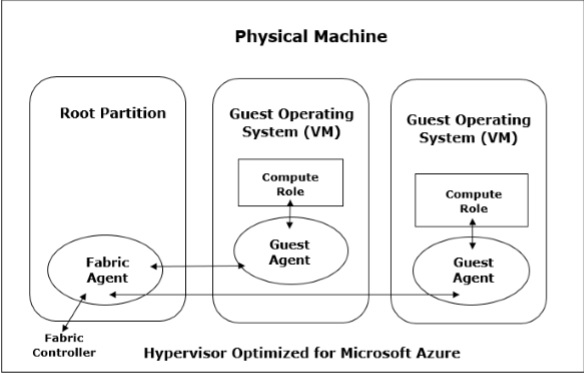
- Microsoft Azure Tutorial
- Microsoft Azure - Home
- Cloud Computing - Overview
- Microsoft Azure - Windows
- Microsoft Azure - Components
- Microsoft Azure - Compute Module
- Microsoft Azure - Fabric Controller
- Microsoft Azure - Storage
- Microsoft Azure - Blobs
- Microsoft Azure - Queues
- Microsoft Azure - Tables
- Microsoft Azure - CDN
- Microsoft Azure - Applications
- Microsoft Azure - Security
- Microsoft Azure - Datacenters
- Microsoft Azure - Scenarios
- Microsoft Azure Advanced
- Microsoft Azure - Management Portal
- Azure - Create Virtual Network
- Azure - Deploying Virtual Machines
- Azure - Endpoint Configuration
- Azure - Point-to-Site Connectivity
- Azure - Site-to-Site Connectivity
- Microsoft Azure - Traffic Manager
- Microsoft Azure - PowerShell
- Azure - Monitoring Virtual Machines
- Azure - Setting Up Alert Rules
- Azure - Application Deployment
- Microsoft Azure - Backup & Recovery
- Azure - Self-Service Capabilities
- Azure - Multi-Factor Authentication
- Azure - Forefront Identity Manager
- Azure - Data Import & Export Job
- Microsoft Azure - Websites
- Microsoft Azure - Scalability
- Microsoft Azure - Disk Configuration
- Microsoft Azure - Disk Caching
- Microsoft Azure - Personalize Access
- Azure - Personalize Company Brand
- Azure - Self-Service Password Reset
- Microsoft Azure - Self-Service Group
- Microsoft Azure - Create a Group
- Azure - Security Reports & Alerts
- Azure - Orchestrated Recovery
- Microsoft Azure - Health Monitoring
- Microsoft Azure - Upgrades
- Microsoft Azure Useful Resources
- Microsoft Azure - Quick Guide
- Microsoft Azure - Useful Resources
- Microsoft Azure - Discussion
Microsoft Azure - Fabric Controller
Fabric Controller is a significant part of Windows Azure architecture. When thinking of the components or services provided by Windows Azure, we wonder how all this works and what is happening in clouds. It seems very complex from our end. Let us look into the physical architecture of these services to have a better understanding of Fabric Controller.

Inside the datacenter, there are many machines or servers aggregated by a switch. We can say that fabric controller is a brain of the azure service that analyses the processes and makes decisions. Fabrics are group of machines in Microsoft’s datacenter which are aggregated by a switch. The group of these machines is called cluster. Each cluster is managed and owned by a fabric controller. They are replicated along with these machines. It manages everything inside those machines, for e.g., load balancers, switches, etc. Each machine has a fabric agent running inside it and fabric controller can communicate with each fabric agent.
When selecting a virtual machine offered by Windows Azure services, there are five options to choose from. The configuration is as follows −
| Memory | CPU | Instance Storage | |
|---|---|---|---|
| Extra Small | 768 MB | Single core 1.0 GHz | 20 GB |
| Small | 1.75 GB | Single core 1.6 GHz | 225 GB |
| Medium | 3.5 GB | Dual core 1.6 GHz | 490 GB |
| Large | 7 GB | Four core 1.6 GHz | 1,000 GB |
| Extra Large | 14 GB | Eight core 1.6 GHz | 2,040 GB |
When a user chooses one of the virtual machine, the operating system, patch updates and software updates are performed by fabric controller. It decides where the new application should run which is one of the most important functions of Fabric Controller. It also selects the physical server to optimize hardware utilization.
When a new application is published in Azure, an application configuration file written in XML is also attached. The fabric controller reads those files in Microsoft datacenter and makes the setting accordingly.
In addition to managing the allocation of resources to a specific application, it also monitors the health of compute and storage services. It also makes the failure recoveries for a system.
Imagine a situation where four instances of web role are running, and one of them dies. The fabric controller will initiate a new instance to replace the dead one immediately. Similarly, in case any virtual machine fails, a new one is assigned by the fabric controller. It also resets the load balancers after assigning the new machine, so that it points to the new machine instantaneously. Thus, all the intelligent tasks are performed by the Fabric Controller in Windows Azure architecture.